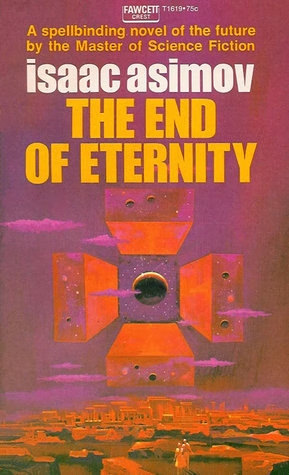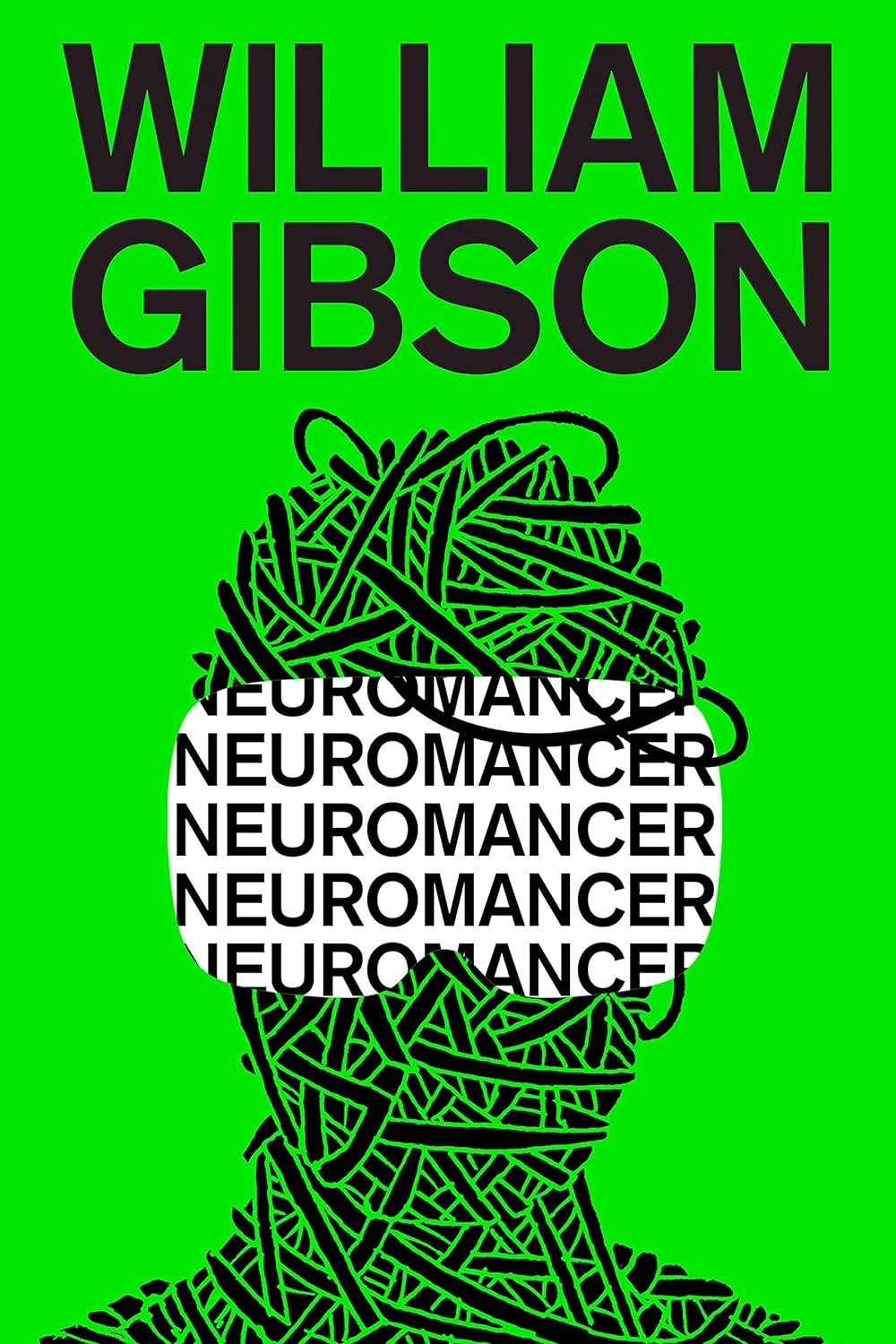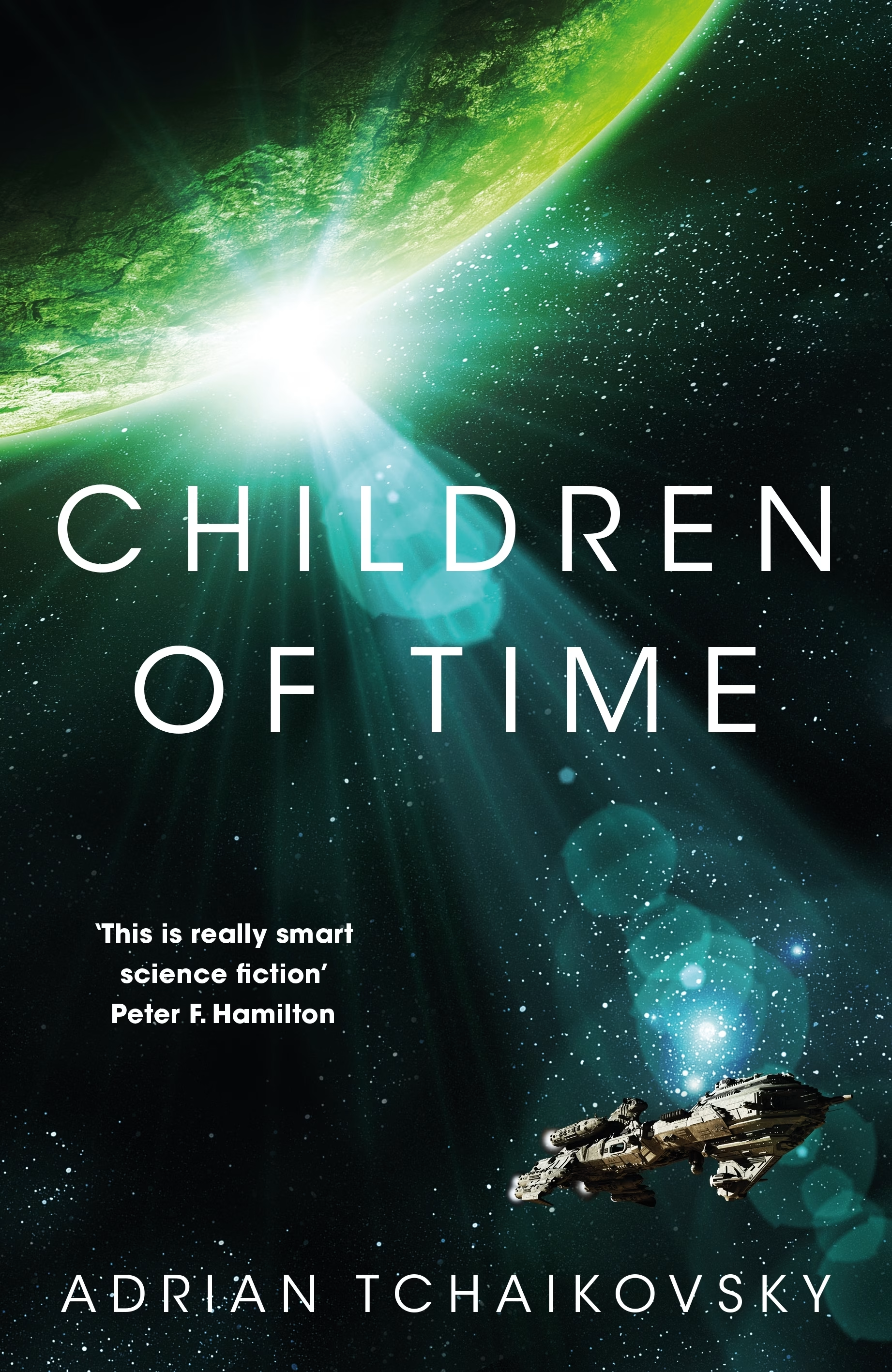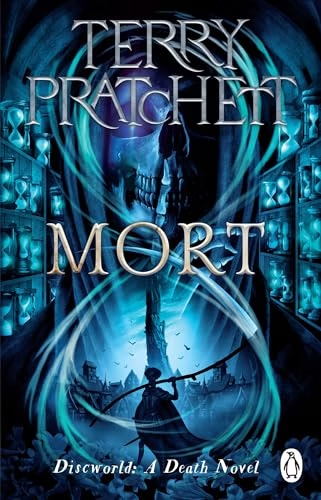Plot Summary
The Technician and Eternity
In a future outside of normal time, an organization known as Eternity monitors and alters human history. Its members, called Eternals, are recruited from different centuries. They live in specialized facilities that exist in a state of “physiotime,” moving upwhen (to the future) and downwhen (to the past) through history in devices called “kettles.” Their mission is to observe human societies, calculate points of intervention, and execute “Reality Changes”—subtle alterations to the past that ripple forward to create a better, safer, and happier future for humanity.
Andrew Harlan is a Technician, the most vital and feared of all Eternals. It is his job to implement the Minimum Necessary Change (M.N.C.) that triggers a new Reality. Because of this godlike power to erase and rewrite the lives of billions, Technicians are socially ostracized, seen as cold and inhuman. Harlan embraces this persona, dedicating himself to his duty with dispassionate precision. His only personal interest is a scholarly obsession with the “Primitive” era—the centuries before Eternity was founded in the 27th Century.
Harlan’s unique talent and his interest in the past attract the attention of the legendary Senior Computer Laban Twissell, a member of the powerful Allwhen Council. Twissell makes Harlan his personal Technician and gives him a strange side project: to teach Primitive history to a newly recruited Cub named Brinsley Sheridan Cooper, an oddly over-aged and socially awkward recruit from the 78th Century.
The Affair in the 482nd Century
Harlan is given a temporary assignment back in the 482nd Century, a hedonistic and matriarchal society he once Observed. He again serves under Assistant Computer Hobbe Finge, a man for whom he holds a deep-seated dislike. There, he encounters Noÿs Lambent, a beautiful and charismatic Timer from the 482nd’s aristocracy who is working as Finge’s “secretary.” Harlan is both repulsed by her apparent frivolity and inexplicably drawn to her.
Finge assigns Harlan a delicate Observation mission: he must live in Noÿs’s home to study the upper class. During this time, despite his rigid conditioning, Harlan falls deeply in love with her. Their affair is passionate and transformative for the emotionally repressed Technician. However, upon returning to Eternity, a jealous and spiteful Finge reveals a devastating truth: the aristocracy of the 482nd holds a superstition that physical intimacy with an Eternal grants a Timer immortality. Finge claims Noÿs only seduced Harlan to achieve eternal life. Furthermore, he reveals that the very Reality Change Harlan’s observation has confirmed is designed to eliminate this superstition. In the new Reality, the Noÿs Lambent who emerges will have no reason to love him.
Crime Against Eternity
Faced with losing the only love he has ever known, Harlan commits the ultimate crime against his order. He uses his Technician’s privilege of unrestricted travel to return to the 482nd just before the Reality Change is implemented. He persuades Noÿs to come with him and smuggles her out of Time and into Eternity. To keep her safe and hidden, he takes her to an abandoned Section in the 111,394th Century, one of the mysterious “Hidden Centuries” from which Eternals are barred from entering Time and where no one would ever think to look for them.
Harlan is now a fugitive, harboring an illegal Timer and determined to find a way to secure their future together. He rationalizes that if he can find a flaw in an upcoming Reality Change, he can use his knowledge as leverage with the Allwhen Council.
The Circle in Time
While hiding Noÿs, Harlan’s research into Primitive history leads him to a staggering discovery. The mathematics required for Vikkor Mallansohn to invent the Temporal Field in the 24th Century did not exist until the 27th. The creation of Eternity is a temporal paradox. He correctly deduces that Twissell’s secret project is to send the mathematically-trained Cub, Brinsley Cooper, back to the 24th Century to provide Mallansohn with the necessary knowledge. Harlan realizes that his own role as Cooper’s teacher of Primitive culture is essential to this grand scheme—the “full circle” that bootstraps Eternity into existence. He now believes he has ultimate leverage over Twissell and the Council.
Twissell confronts Harlan and confirms his deductions, but with a shocking correction: Brinsley Cooper is not being sent back to teach Vikkor Mallansohn. Brinsley Cooper is Vikkor Mallansohn. The entire project is a closed causal loop in which Cooper travels to the past, assumes the identity of a reclusive scientist named Mallansohn, “invents” the Temporal Field, and dies in the Primitive era, leaving behind a memoir that will instruct future Eternals—including Twissell and Harlan—on how to recruit and send him back.
The End of Eternity
Twissell, aware of Harlan’s crime with Noÿs through Finge’s reports, tricks him. Feigning cooperation and promising that Noÿs will be safe, he lures Harlan into a sealed control room to oversee the final launch of Cooper into the past. While Harlan is helpless, Twissell reveals his deception: with the circle closed, Harlan will be punished and Noÿs will be dealt with.
Believing he has lost everything, Harlan decides to act as Samson, destroying the temple and himself with it. In the final seconds before the launch, he uses his technical knowledge to sabotage the controls. Instead of sending Cooper to the 24th Century to become Mallansohn, he sends him careening into the 20th Century, breaking the loop. Eternity, its origin now erased, is doomed to vanish from existence.
However, Eternity does not immediately disappear. Twissell explains that as long as the “alteration” is reversible, Reality remains stable. They still have a chance to find Cooper and correct the timeline. The only clue is a message Cooper might have left in the past, a message only an expert in Primitive history—Harlan—could find. Searching through his collection of 20th-century magazines, Harlan finds a cryptic advertisement from 1932: a drawing of an atomic bomb’s mushroom cloud (over a decade before it was known to history) with the headline “All the Talk Of the Market.” The first letter of each word spells A.T.O.M. This is Cooper’s S.O.S.
The Beginning of Infinity
Harlan agrees to travel to the 20th Century to retrieve Cooper, but only on the condition that he can bring Noÿs with him. During this period, he is troubled by the memory of a strange energy barrier that had briefly appeared across the kettleways at the 100,000th Century, trapping Noÿs.
Once they arrive in the Primitive era of 1932, Harlan confronts Noÿs with his final deduction. He accuses her of being an agent from the Hidden Centuries, a human from the far future who manipulated him from the very beginning. The energy barrier was their creation, designed to provoke him into his final, desperate act of sabotage.
Noÿs calmly confirms his accusation. She reveals that her people, living in the 111,394th Century, discovered that Eternity’s benevolent meddling had a catastrophic, unintended consequence. By creating a perfectly safe, stable, and mediocre human history, the Eternals had extinguished the spark of ambition and risk-taking. In this altered Reality, humanity never develops interstellar travel in time, finds the galaxy already colonized by other races, and, trapped on Earth, loses its will to live and eventually dies out.
Her mission is to destroy Eternity to restore the “Basic State” of Reality, a more dangerous but ultimately grander history where humanity colonizes the galaxy. She chose the specific Reality in which she manipulated Harlan because, in viewing the infinite possibilities, it was the one in which she genuinely fell in love with him.
Harlan is given the final choice. He can retrieve Cooper, close the circle, and restore the safe but sterile future of Eternity. Or, he can let Cooper remain lost, allowing Eternity to vanish forever and ushering in a new, uncertain but potentially infinite future for mankind among the stars. He looks at Noÿs, the woman he loves, and makes his choice. The kettle they arrived in vanishes. Eternity is gone. Standing together on Earth in 1932, they face the beginning of Infinity.
Characters
Andrew Harlan
The novel’s protagonist, Harlan is the archetypal Eternal: brilliant, dedicated, and emotionally repressed. As a Technician, he occupies the highest and lowest rungs of the social ladder—his work is indispensable, but it forces him into a lonely, ostracized existence. He finds solace in duty and in his academic passion for Primitive history. His carefully constructed world shatters when he meets Noÿs Lambent. His love for her awakens a humanity he had long suppressed, transforming him from a perfect cog in the machine to a passionate rebel willing to betray his most sacred oaths and ultimately destroy his entire world for the sake of one person.
Noÿs Lambent
Initially appearing as a beautiful, hedonistic aristocrat from the 482nd Century, Noÿs is the story’s central mystery and catalyst. She is eventually revealed to be a highly capable and intelligent agent from the far future (the 111,394th Century), tasked with the monumental mission of ending Eternity. Far from being a manipulative seductress, her motivations are philosophical and profound: she seeks to free humanity from a future of safe mediocrity. Her love for Harlan is presented as a genuine emotion that developed as she studied the very timeline she was assigned to create, adding a layer of tragic romance to her epic goal.
Laban Twissell
The Senior Computer of Eternity, Twissell is a gnomish, brilliant, and weary figure who carries the weight of all of history on his shoulders. As the guardian of the “Mallansohn Memoir,” he is the architect of the temporal loop that sustains Eternity’s existence. He is a master of manipulation, playing Harlan, Finge, and others like pieces on a chessboard to ensure the circle remains unbroken. However, a deep tragedy in his past—involving a forbidden love and a child lost to a Reality Change he himself initiated—reveals a core of humanity and pain beneath his calculating exterior.
Hobbe Finge
An Assistant Computer and Harlan’s primary antagonist, Finge is driven by ambition, professional jealousy, and insecurity. He resents Twissell’s patronage of Harlan and sees the Technician as a threat. His actions are petty and cruel, motivated by a desire to sabotage Harlan’s career and win Noÿs for himself. It is Finge’s spiteful revelation about Noÿs’s supposed motives that inadvertently pushes Harlan to commit his first great crime, making Finge a crucial, if unwitting, catalyst for Eternity’s downfall.
Core Themes
The Price of Utopia
Eternity’s mission is to create a utopia for humanity by eliminating all major disasters, wars, and social ills. The novel powerfully questions the cost of such manufactured perfection. Noÿs argues that by removing suffering and risk, the Eternals have also removed the primary drivers of human greatness: struggle, ambition, and the will to conquer the unknown. The theme suggests that a perfectly safe society may also be a stagnant one, and that humanity’s greatest achievements can only be born from its greatest challenges.
Free Will vs. Determinism
The story presents a grand conflict between humanity’s right to choose its own path and a predetermined fate orchestrated by a benevolent elite. The Eternals believe they are guiding humanity toward the best possible future, but in doing so, they remove humanity’s agency. This is mirrored in the existence of Eternity itself, which is not a product of choice but of a deterministic, closed time loop. Harlan’s final decision is a vote for free will—choosing an uncertain, dangerous, and potentially infinite future over a safe, predictable, and ultimately finite one.
Love as an Unquantifiable Force
In the hyper-logical, data-driven world of Eternity, human emotion is a disruptive and dangerous variable. Eternals are discouraged from forming attachments for this very reason. Harlan’s love for Noÿs is a force that no Computaplex can predict or control. It is this “illogical” passion that motivates him to defy centuries of established order and becomes the catalyst for the unraveling of Reality itself, demonstrating that love is a power capable of rewriting history.
The Nature of History and Reality
The novel fundamentally explores what “history” means in a universe where it can be endlessly revised. If a life, a culture, or a great work of art can be erased by a Reality Change, did it ever truly exist? The Eternals treat history as a vast dataset to be optimized, while the characters’ struggles highlight the personal, emotional value of a single, immutable timeline. The story suggests that a “real” history, with all its flaws and tragedies, is more valuable than an infinite series of perfected but ephemeral drafts.
Plot devices
The Bootstrap Paradox
The entire existence of Eternity is built on a bootstrap paradox, or a closed causal loop. The technology for Time-travel is invented in the 24th Century by Vikkor Mallansohn, but only because he is taught the principles by Brinsley Cooper, an Eternal sent back from the future. However, Cooper is Mallansohn, meaning the knowledge and the organization of Eternity create themselves in a self-contained loop with no clear origin. This “full circle” is the central mechanism that Twissell seeks to protect and that Harlan ultimately breaks.
The Femme Fatale
Noÿs Lambent is introduced in the mold of a classic femme fatale—a beautiful, mysterious woman whose allure leads the protagonist to break his moral code and betray his allegiances. Asimov subverts this trope by revealing her motives to be not selfish or destructive, but deeply philosophical and aimed at the liberation of the entire human race. She is less a temptress and more of a revolutionary who uses love as a necessary tool to achieve a monumental goal.
The MacGuffin
The “Mallansohn Memoir” serves as the story’s central MacGuffin. It is a physical object—a document left behind by the founder of Eternity—that drives the actions of the main characters, particularly Twissell. The memoir contains the “instructions” for completing the time loop, and the struggle to fulfill its prophecies dictates the entire plot, even though its specific contents are less important than its function as a script for destiny.





